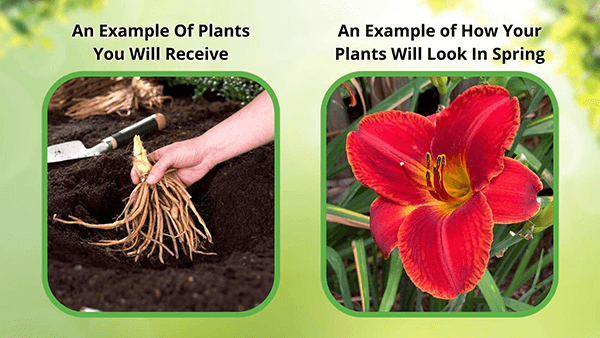Wood Poppy
Wood Poppy
| Order | Percentage Discount | ||
|---|---|---|---|
| 2-5 | 25% Off | ||
| 6-10 | 30% Off | ||
| 11-25 | 35% Off | ||
| 26-50 | 45% Off | ||
| 51-100 | 65% Off | ||
| 101-250 | 70% Off | ||
| 251-500 | 80% Off | ||
| 501+ | 85% Off | ||
Couldn't load pickup availability
5-7 Days
Under 12"
Full Shade
3-9
Flowering
Bare-root
Wood Poppy
Wood Poppy (Stylophorum diphyllum) is a native wildflower of North America. It is a shade-loving plant that produces bright yellow flowers in early spring. The plant has several medicinal properties and is also used for landscaping.
Wood Poppy's Appearance
The plant grows to 12-18 inches in height and has a 12-18 inches spread. It has lobed leaves that are bluish-green in color and hairy stems. The flowers are yellow and have four petals that form a cup-shaped flower.
Habitat
The plants are typically found in woodland, streams, and other moist, shaded areas. They like soils that are rich in organic matter and well-draining.
Cultivation
The Plants are Easy to Grow and Require Minimal Maintenance
They can be propagated through seeds or by division. They are a great addition to woodland gardens, shade gardens, or naturalized areas. The Woody plant has several healing properties and has been used to treat various problems, such as skin irritations, digestive issues, and respiratory problems. However, it should be used cautiously as it can be dangerous if consumed in large amounts.
Landscaping With Yellow Perennials
The plants are often used in landscaping due to their beautiful yellow flowers and ease of cultivation. They are great for adding color to shady areas and can be used as ground cover or as an accent plant.
The Stylophorum Diphyllum is commonly found in shady areas throughout woodland. It can reach up to 1.5 feet tall when fully grown and has a hearty root system for support.
This plant blooms between March and May, displaying a bright yellow array of beautiful flowers on the forest floors. To plant these flowers at home, one must use highly organic soil. It is best to grow these plants from seedlings; they must get plenty of shade.
The Seeds Germinate in the Spring
Wood Poppy does not bloom until the following season, so it is necessary to plan your gardening accordingly. Keeping the soil of these flowers moist is also very important.
Treat the soil with a thin layer of mulch during the cold winter to ensure your wood poppies are alive and healthy every spring. They will live for a decent time and survive many seasons with proper care.
The plant has four petals and a bright yellow flower. Its scientific name is Stylophorum Diphyllum. The flowers bloom in the spring but throughout the summer and fall unless they dry out. The plant can grow between one and two feet tall and has a diameter of two inches when fully grown.
The plant grows best in zones 4 to 8, and they can be found in woodlands across the United States. They grow best in moist soil in partially or fully shaded areas. They can grow in sunny areas as long as they have moist soil.
It is a perennial; its seeds can be harvested when the seed pods split. The seed should be planted outside immediately and will bloom the following spring.
This Is How Your Plants Will Look upon Delivery
Bloom/Foliage Color
Yellow
Shipping date depends on the date displayed and chosen when you order from the product's page.
We only accept returns on plants verified dead. If you think your plants have died, we offer a 1 year warranty, please use use this File a Claim Link to verify dead plants and start with return warranty process.









